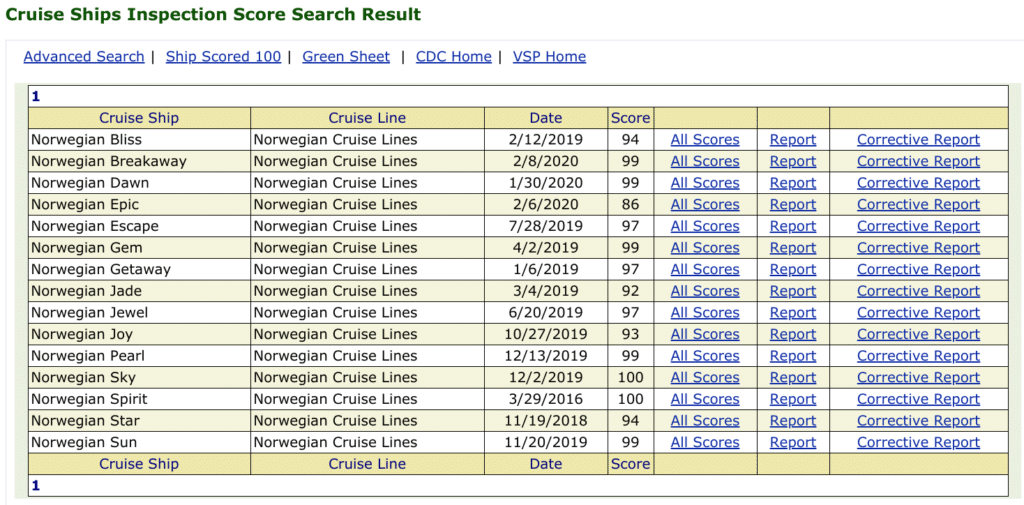With the first ship to resume sailing in the Caribbean having to return to Barbados after passengers tested positive for COVID, already there are calls to reinstate the CDC sailing ban. And dozens of articles this week have revived the term “floating petri dish” as a description for passenger ships.
FAKE NEWS? I understand where the comparison comes from. However, I believe the term is being used against logic and to advance a narrative.
“Floating Petri Dish” is a Shortcut Used by Lazy Journalists and Critics
Having been a journalist for a dozen years or so, I get it. You often search for hooks to allow readers / listeners / viewers to put their mind around complex concepts. But the term “floating petri dish” is more click bait sensationalism than a tool to help understanding. As i mentioned in an earlier post cruise ships are under a level of scrutiny not seen by other industries and gathering places. Just one example: airlines are no longer making any effort at social distancing aboard (not that their efforts were that stellar in the first place). Travel Vlogger “Where’s Walter” explains further:
Cruise Radio Has a Comedic (Sarcastic) Look at the Term
Ships are Clean. I Mean, REALLY Clean
Just how clean? Here are the standards they are held to: CDC VSP Travelers page. The Encore is so new it had yet to have been inspected, according to the record available here. So let’s look at the other 16 NCL Ships (screen shot from https://wwwn.cdc.gov/InspectionQueryTool/InspectionSearch.aspx):

The lowest-scoring ship in the fleet in its last inspection was the Epic. It barely passed, with an 86. Want to see what the crew was gigged on? Norwegian Epic VSP Inspection Report 2020-02-09 — no corrective report was issued due to COVID.
Think a ship which scored 100 was in compliance with all the standards? Think again. NCL Spirit Report 2016-03-29.
The standards ships are held to are — well, high. I get the feeling Amand Duplantis understands….
The Sea Dream Failed to Follow Their Own Protocol

SeaDream also is requiring social distancing on board SeaDream 1 and, since Monday evening, mask-wearing. The line did not require mask-wearing during the first two days of the voyage. [emphasis mine]
Gene Sloan, Reporter/Passenger on Sea Dream, 2020-11-11
Original Article on ThePointsGuy.com
Apparently the line thought the extensive testing ahead of the cruise had succeeded in creating the sought-after “bubble.” But they neglected to enforce the mask wearing required by their policy. In fairness, the symptomatic patient started feeling sick two days into the cruise. It is likely they contracted COVID before boarding and the virus load was not enough yet to be detected by the testing.
My Take
This incident shows why the CDC is mandating PCR quick tests before boarding, once ships are underway again. They are much more sensitive than the nasal swab tests.

My preference would be that lines also require what the Healthy Sail Panel recommended, a PCR test with results supplied to the line, taken no more than five and no less than three days prior to leaving home to begin the trip.
Once a vaccine is available, I think a record of immunization should be required to be provided to the cruise line as part of the eDoc process pre-boarding/pre-departure from home. I also believe a negative PCR should be required to board, in spite of the vaccination requirement. There is too much unknown about the vaccines yet and there is a percentage of people for whom the vaccine is ineffective. At least for 2021 (and possibly 2022) I think erring on the side of safety is warranted.
But I do not agree with Senator Blumenthal and Rep. Matsui. The No-Sail order does not need to be reinstated. If the directives in the Conditional Sail protocols are followed and the cruise lines maintain the enhanced cleanliness and improved air handling systems they have committed to, there is no reason cruising can’t begin. The general experience thus far in Europe shows this.
Will cruising be COVID-free? No. But with the proper protocols, especially masking and distancing, the risks from cruising can be brought in line with the industry’s record on other contagions. The reason the Diamond Princess had so many cases at the beginning of the pandemic is because the ill were not allowed to leave. Forcing thousands of people to remain in the same auditorium for 14 days would likely have produced even more cases than on Diamond Princess. And one of the keys of the CDC Conditional Sail protocols is rapid identification and isolation of ill passengers.
Bottom line: Can the Cruise Industry Survive?
I think the policies in place as I write this will allow for the industry to gradually restart and to sail safely by late-summer 2021. I worry that at least the first half of the Alaska summer season is at risk. Financially, NCL said at the beginning they had 18 months of runway on their cash without turning a single propeller. That means about 10 months left now. I expect the larger ships including Encore to be the first to begin revenue passenger service…I’m guessing sometime in February at the earliest. I say this because the larger ships take less passenger load to generate a profit…something like 30% passenger load is the break even point I’ve seen mentioned several times.
Here are some thoughts from University of Portsmouth Professors Liz Sharples and Kokho Jason Sit:
Although the long-term sustainability of the sector is uncertain, it can take solace in the fact that cruise passengers are notoriously loyal. Tourism studies have shown that visitors return even after a disaster. And, according to a survey conducted by CLIA, nine out of ten passengers said they “probably or definitely will” cruise again.
Original arTicle
In researching this article I came across a research study that described the type of traveler I am: Crisis-resistant:
Empirical results indicate that segments of tourists resistant to external or internal crisis events indeed exist and—as theoretically postulated—demonstrate higher levels of risk propensity and resistance to change. In contrast, risk shifting is not associated with being a crisis-resistant tourist.
Annals of Tourism Research
Volume 53, July 2015
I think that comes from my history in the EMS and Emergency Management sectors and my exposure to disasters and disaster planning in my journalism career. I tend not to get terribly excited in the midst of crisis. Adequate planning and preparation is key.
What are your thoughts? Sound off below:

